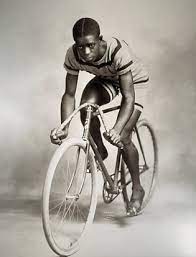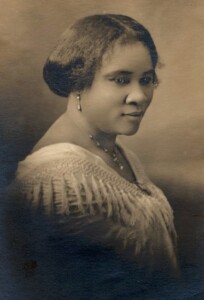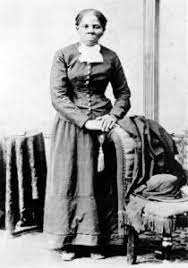February is the month we celebrate Black History. I thought it would be fun to introduce you to a few Black Americans who helped shape the history of Indiana. One on the list is actually part of New Albany history! Lets dive right in and learn about these four historical figures.
Marshall “Major” Taylor (November 26, 1978 – June 21, 1932)

Mr. Taylor was born and raised in Indianapolis, Indiana. As a child, he worked in bicycle shops where he also learned to ride a bicycle. He began to enter races on both the road and track. In 1892, he was hired to do bicycle stunts outside a bike shop in Indianapolis. He wore a soldier’s uniform and earned the nickname of “Major”. When he reached his upper teens, he followed his employer and mentor to Massachusetts where he continued to improve his cycling career. He began to break track records and become recognized as more than an amateur cyclist. Soon, Mr. Taylor was racing in six-day races. These were races that were competed solo, even though others were in competition with you. The person who completed the most laps over the six day period won. Sprinting was Major Taylor’s specialty, though. In 1899, he participated in the World Track Championships at the age of 21, where he became the first African American to achieve the level of Cycling World Champion. He also was the second African American to win a World Championship in any sport. He retired from professional cycling at the age of 32. Towards the end of his life, he faced a lot of financial struggles. He is still considered the fastest cyclist ever, and he passed away due to a heart attack at the age of 53 in Chicago, Illinois.
Madam CJ Walker (December 23, 1867 – May 25, 1919)

Madam CJ Walker was born Sarah Breedlove in 1867 in Delta, Louisiana. She was the first person in her family born into freedom after the signing of the Emancipation Proclamation. She traveled the United States living in Mississippi, Pennsylvania, Colorado, and Indiana. After her third marriage to Mr. Charles Joseph Walker, she became known as Madam CJ Walker. Once she moved to Indianapolis, Indiana, she started the Madam CJ Walker Manufacturing Company. With this success, she became the first Black woman, self-made millionaire and built racial equality into her business. She is known as an important figure who lifted up Black women during a time of sexism and racial discrimination, also known as the Jim Crow Era. Indiana will be grateful for the impact Madam CJ Walker has on the state. She passed away of complications of hypertension and kidney failure at the age of 51 in New York.
Hurley C. Goodall Jr. (May 23, 1927 – May 12, 2021)

Mr. Goodall was a lifelong resident of Muncie, Indiana. He was an author, historian, and politician. He became a local Civil Rights icon in the 1960s, and changed history in 1970 by being the first African American elected to serve on the Muncie Community Schools Board of Education. He served on the school board until 1978 when he was elected to the Indiana House of Representatives, where he served until 1992. Before his political career, he was also the first African American to work in the Muncie Fire Department. After meeting Dr. Martin Luther King, Jr. at the Montgomery Bus Boycott, he sponsored and supported legislation to approve a holiday in his honor that was eventually adopted in 1986. He passed away at the age of 93 in Muncie, Indiana.
Lucy Higgs Nichols (April 10, 1838 – January 25, 1915)

Lucy was a woman born into slavery in Tennessee, but escaped with her daughter, Mona, in 1862. She served as a nurse for the Union Army during the American Civil War. The soldiers called her “Aunt Lucy” and considered her family. Many nurses were volunteers and were denied pensions during the war, including Lucy. The Grand Army of the Republic helped her receive her pension in July 1898. She settled in New Albany, Indiana after the war where she married John Nichols. The couple lived in New Albany for the next 40 years, including a house on Naghel Street. On January 1, 1915, Lucy was admitted to the Floyd County Poor House where she eventually died on January 25, 1915.
You can also visit Lucy’s exhibit at the Cultural Arts Center, which is part of The Floyd Library! They are open Monday – Thursday 10:00-7:00 and Fridays/Saturdays from 10:00-5:00.
I hope you have enjoyed learning about these special people who helped and continue to help shape Black History.
Sources:
Tolman, L. (2002). Major Taylor – A Biography at a Glance. Major Taylor – biography at a glance. https://www.majortaylorassociation.org/biography.htm
Michals, Debra. “Biography: Madam C.J. Walker.” National Women’s History Museum, 2015, www.womenshistory.org/education-resources/biographies/madam-cj-walker.
